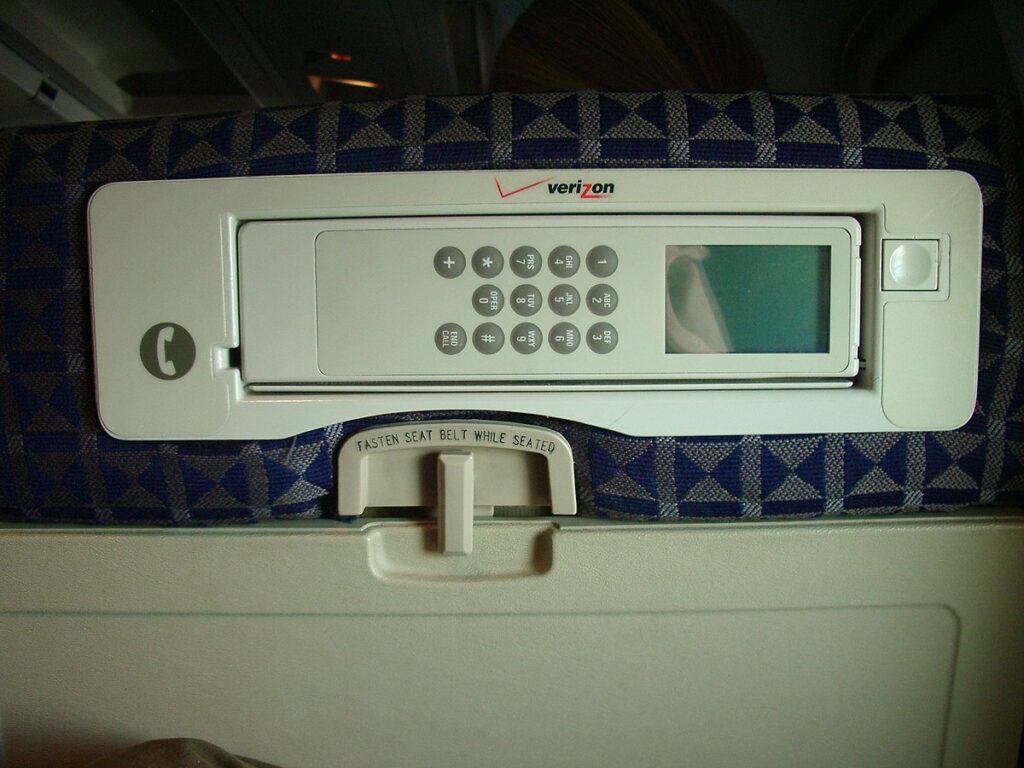Remember the Airfone? Why did it Disappear for Aircraft Seatbacks?
When me and my family took a trip in the late 80’s, I couldn’t help but to notice this device embedded into the seatback of the seat in front of me.
Was it a game? – Was it IFE(In Flight Entertainment)? No. It was a phone! The number pad made it obvious, lol –
I had no one at the age of 11 that I would have needed to make a call to, however I was curious about the device and looked through the inflight magazine for more information.
The thing looked cool in all, had some kind of spinach colored display. But I always thought that they were just too expensive to use for my needs at the time.

The Airfone is a history-making invention that has revolutionized the way we communicate with each other. The concept of in-flight communication was first introduced in the early 1980s by a company called GTE Airfone. They saw an opportunity to provide airline passengers with an easy and convenient way to make phone calls while they were airborne. The Airfone quickly caught on, and soon became a popular feature on many commercial flights.
Over the years, the technology behind the Airfone has evolved significantly. Initially, it relied on ground-based cell towers to transmit signals between planes and the ground. However, this technology proved unreliable at higher altitudes or over oceans where there were no towers available. To overcome this problem, satellite-based communication systems were developed that could provide reliable coverage anywhere in the world.
The Airfone was originally developed by John D. Goeken, the founder of MCI Communications and FTD’s Mercury Network in the 70’s. A 50% share in Airfone was purchased by Western Union in 1981, and subsequently sold to GTE in 1986 for $39 million cash. Delta Airlines was the United States 1st public offering of the air-to-ground system using Airfone.
The first generation Airfone service offering only allowed air-to-ground calls and the calls were frequently dropped. They updated the technology in 1992 as a joint project by GTE and IEX Corp. IEX would develop the software and it ran on hardware manufactured by Stratus Computers. Stratus Technologies, Inc. is a major producer of fault tolerant computer servers and software.
They named this system GenStar and it had the capability to also receive calls and hand connections over between ground cells as aircraft proceeded en route. They were able to reduce dropped calls thus enhancing system reliability. The user interface had screens and jacks added for fax capabilities.
A couple of things worth noting here is the first iteration of the Airfone was analog. In the early days of Airfone, cordless stations were installed on bulkheads in the cabin. You had to go to the station, insert your credit card into the reader. Once your card was verified, the cordless handset was released. The user was able to take the handset back to their seat and talk. Once the conversation was over, the headset was taken back to the cordless station and the credit card was then released.
Around the time that Airfone began, the first of North American cellular systems were being rolled out. For most people the cellphone was not affordable. Many cities did not have the covereage or the covereage that they had did not go far enough.
When the next generation of Airfone was available, units were placed in the seatbacks of aircraft. The technology improved and the quality of service improved.
What ultimately led to the demise of Airfone was its high costs, limited use, and the proliferation of cell phone technology. Every time I have been on a flight with a unit installed, I never seen it in use. Many airlines did not see the benefit of carrying this equipment in fleets because of limited usage.